Jantar Mantar, Jaipur - Everything To Know
Being the dream destination of art and craft lovers, the Pink City, Jaipur will never stop amazing you with its archeological and historical mysteries in the form of monuments, forts, and palaces.
Today I am going to take you to the most fascinating astronomical observatory, located at the center of Jaipur city, Jantar Mantar.
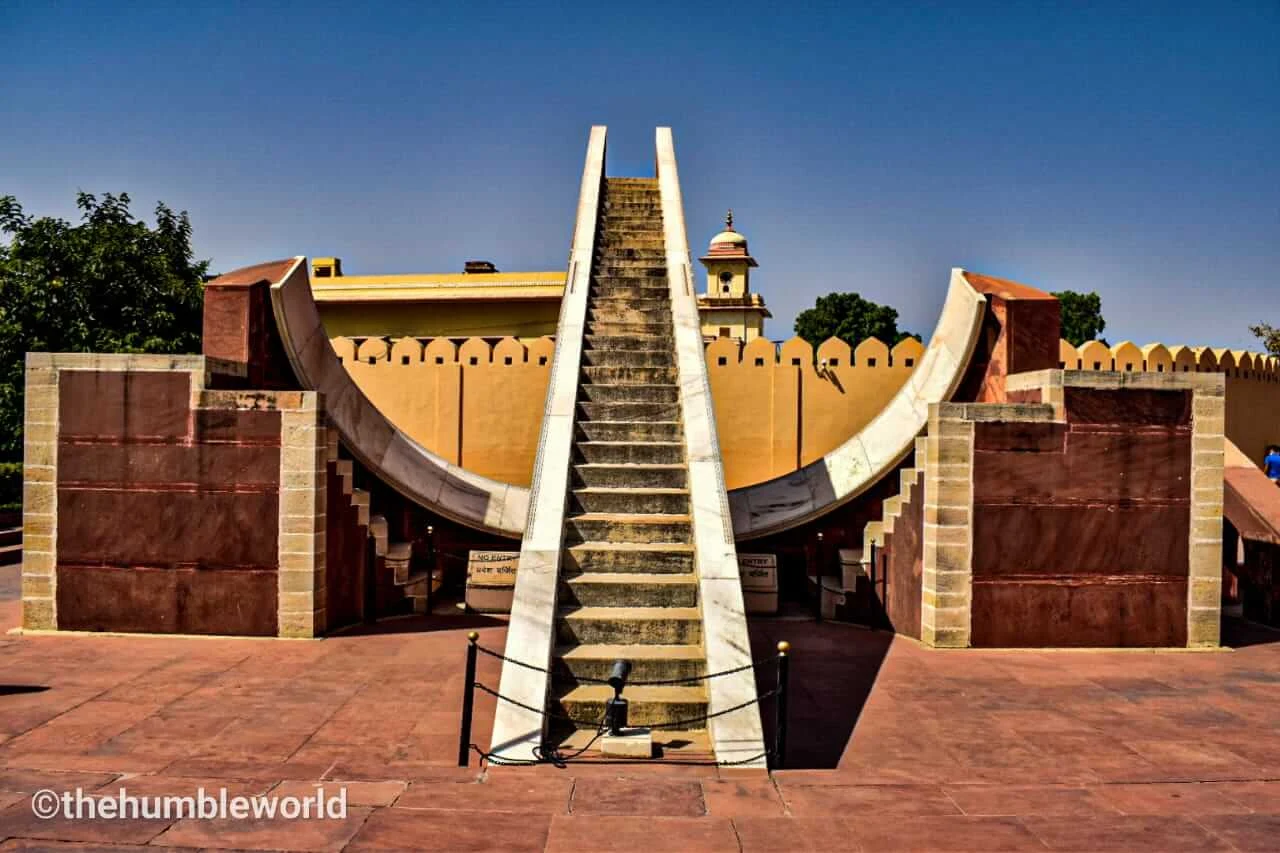 |
| Astronomical Observatory, Jantar Mantar |
Jantar Mantar is one of the world's largest astronomical observatories and is marked as UNESCO's world heritage site in 2010. Jantar Mantar has a collection of archeological and astronomical instruments. There are around 19 geometrical devices, each having a different specialty. There are devices to measure time, prediction of eclipses, the instrument to track orbital stars, determine celestial height.
 |
| Jantar Mantar marked as a UNESCO world heritage site in 2010 |
All of the instruments are carved of stones and marbles. Some of them are designed by Raja Madho Singh himself.
The entire area covers the land of 18700m. The instruments named Samrat Yantra, Raj Yantra, Chakra Yanta, Disha Yantra, and many more are arranged in a uniform manner in the whole area.
Moving on to the history of Jantar Mantar.
History of Jantar Mantar?
Jantar Mantar, Jaipur is an astronomical site, built in the 18th century. This is one of the largest observatories in the world, made of interesting stone structures, made to identify the position of celestial bodies and also to calculate time. The huge instruments there are made up of stones, which can resist temperature changes, shakes, and inaccuracies, following the principles of Indian, Islamic, and western astronomy to attain the maximum accuracy.
 |
| Jantar Mantar, Jaipur |
Now let's move on, how the Jantar Mantar was built:
How Jantar Mantar was built?
Jantar Mantar was built by Maharaja Sawai Jai Singh II, and he built 5 different observatories in different places of the country, Jaipur, Delhi, Mathura, Ujjain, and Varanasi. Jantar Mantar in Jaipur is the largest one of all.
Maharaja Jai Singh II is the founder and a potential ruler of Jaipur city. He was a great scholar in physics, mathematics, and astronomy.
Once a Mughal Emperor, Muhammad Shah assigned him a task to identify the position and movement of celestial bodies. Raja Jai Singh got desperate to determine the time. He decided to create a well-defined calendar. He was interested in mankind and wanted to prepare an accurate astronomical instrument.
To full fill his this dream, he constructed Jantar Mantar in the year, 1718. He made a mission out of this and started studying cosmological principles, based on the findings of Hindu, Islamic, European, and Persian civilizations. And finally constructed five different observatories.
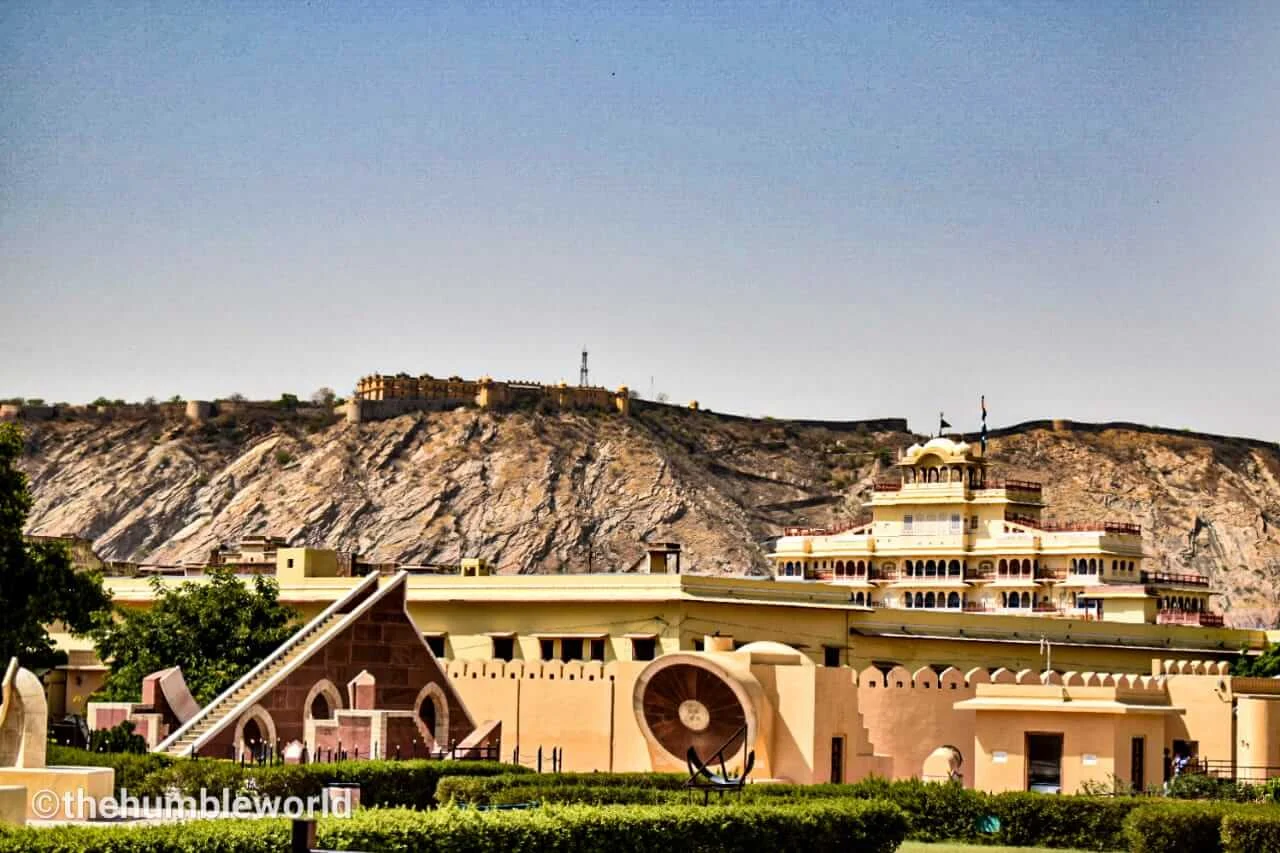 |
| Laghu Samrat and Narivalya Yantra, Jantar Mantar |
The architecture of Jantar Mantar Jaipur?
Jantar Mantar is a collection of astronomical and architectural instruments. There are many instruments, out of which around 20 are the major devices, each having a different specific application.
The purpose of these instruments is to measure times, define the distances between the planets and other celestial bodies. Planetary motions, predictions of eclipses, tracking orbital stars.
The whole observatory is constructed in the land of around 18700 meters. The whole area covers so many instruments, and some of them are known for the largest instruments of their type. All the instruments are finely designed out of stones and marbles. You will be amazed after watching such instruments, and the small scales made of stones with proper measurement. Many instruments are still known for their accuracy.
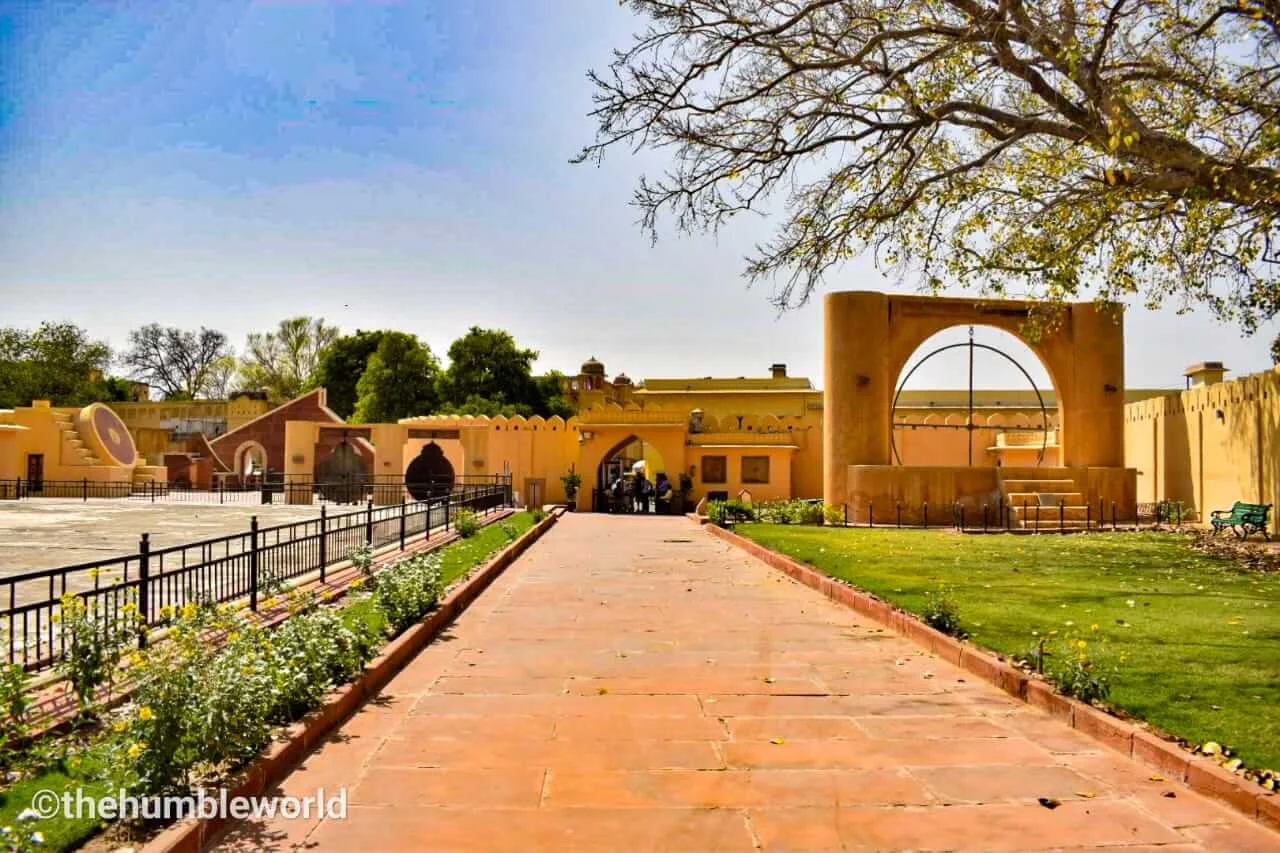 |
| Jantar Mantar Entry Gate |
How To Reach Jantar Mantar, Jaipur?
If you are visiting Jantar Mantar on your Trip to Jaipur, you can directly take a cab to Jantar Mantar and cover both Jantar Mantar and The City Palace in one go.
If you traveling to Jantar Mantar directly from Jaipur Airport, you can opt for a Line 3 Bus from the airport to Tonk Phatak and catch a different Bus to Badi Chaupad from there. From Badi Chaupad, take a small walk and you will reach Jantar Mantar.
Or you can book a cab or taxi directly to Jantar Mantar.
What Is The Best Time To Visit Jantar Mantar?
The best time to Visit Jantar Mantar is definitely the Winters or Spring months. Summers are not irresistible in Rajasthan. So I would not suggest visiting in Summers.
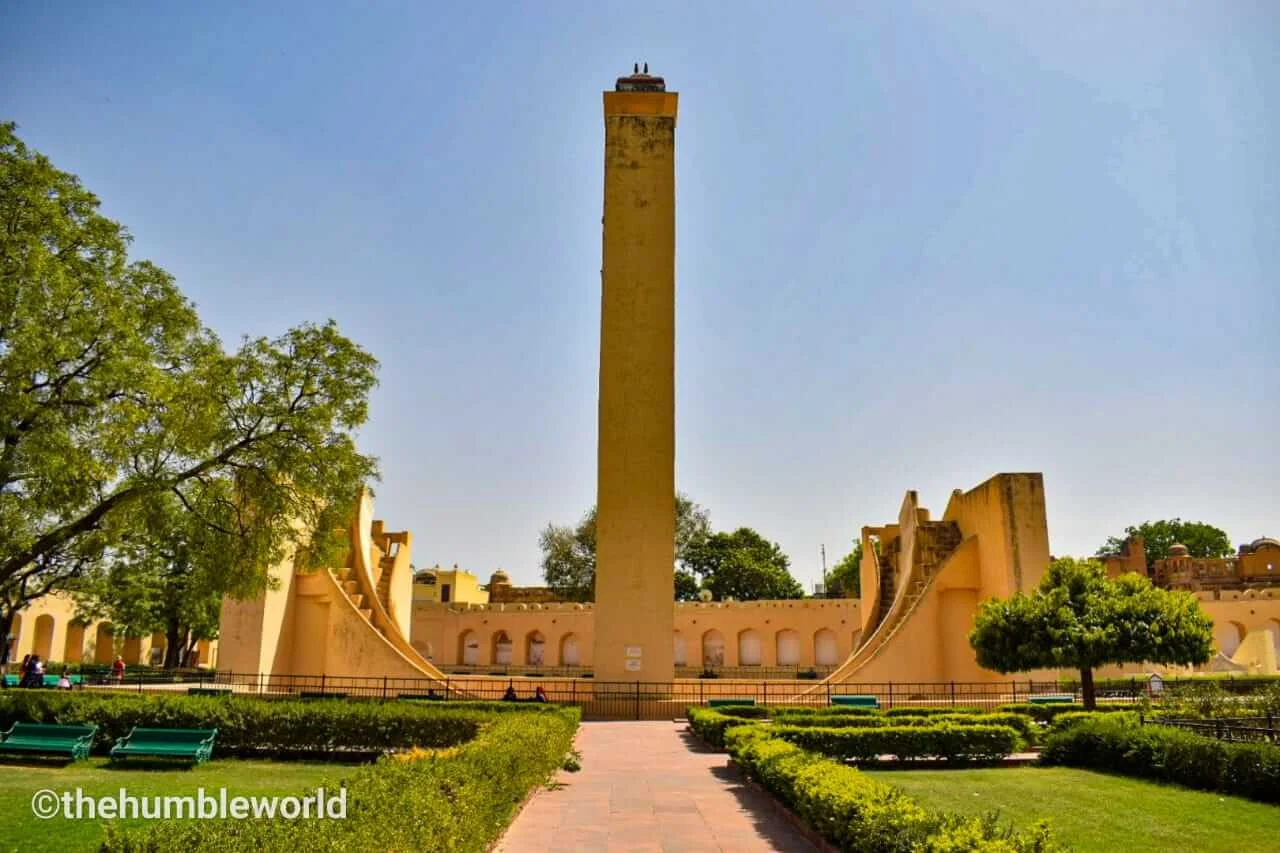 |
| Vrihat Samrat Yantra |
What is the entry Fee of Jantar Mantar?
The entry fees of Jantar Mantar is Rs. 50 for Indian Visitors and Rs. 200 for Foreigner Visitors.
Timing to Visit Jantar Mantar:
It is open from morning 9AM to evening 5 PM.
It will take 2-3 hours for the complete visit to Jantar Mantar. I would recommend taking a guide so that your visit would be exciting after knowing the working of each instrument and how it was built.
Location of Jantar Mantar:
Jantar Mantar in Jaipur is located in Gangori Bazar, inside the market. It is very near to the City Palace. It is said that Jantar Mantar was extended after the construction of City Palace.
Instruments In Jantar Mantar:
Jantar Mantar has basically stone structures of different shapes, with perfectly aligned measurement scale to determine interesting spacial geometry and time.
I am going to provide important information on the must-visit instruments in Jantar Mantar.
1. Vrihat Smarat Yantra : The Huge Sundial
Vrihat Samrat Yantra is a giant Sundial, constructed exactly at the center of Jantar Mantar. It is around 27 meters long and known as the tallest sundial in the world.
The meaning of Samrat Yantra is "Supreme Instrument", is an equinoctial, (celestial equator) sundial, which measures time up to two seconds accuracy.
There is the triangular wall of the yantra, whose shadow, which is kept at the north-south direction with an identical angle to the latitude of the position, travels equal distances in equal intervals of time. This is the standard movement of the shadow of the wall used to calculate/predict the time.
 |
| Prototype of Vrihat Samrat Yantra |
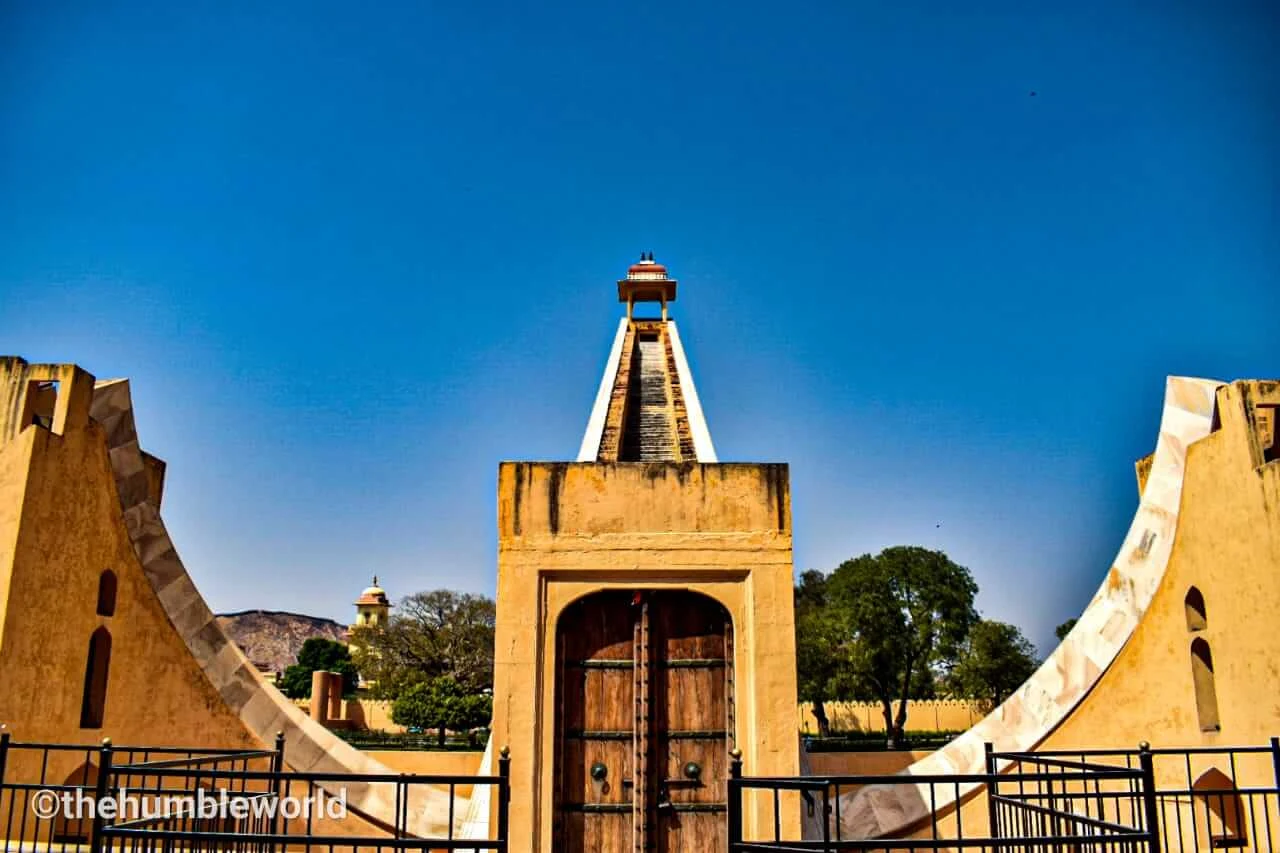 |
| Vrihat Samrat Yantra |
2. Laghu Samrat Yantra :
This control is also known as "Small Samrat Yantra", since it is the small equipment to calculate time, with an accuracy level of up to 20 seconds.
There is a sundial with a ramp in the instrument, which points in the North pole direction. With the movement of ramp shadow onto the finer divisions marked on the curved scale, time is calculated.
Local time, Jaipur's time can be easily calculated by the shadow of the triangular wall of the yantra.
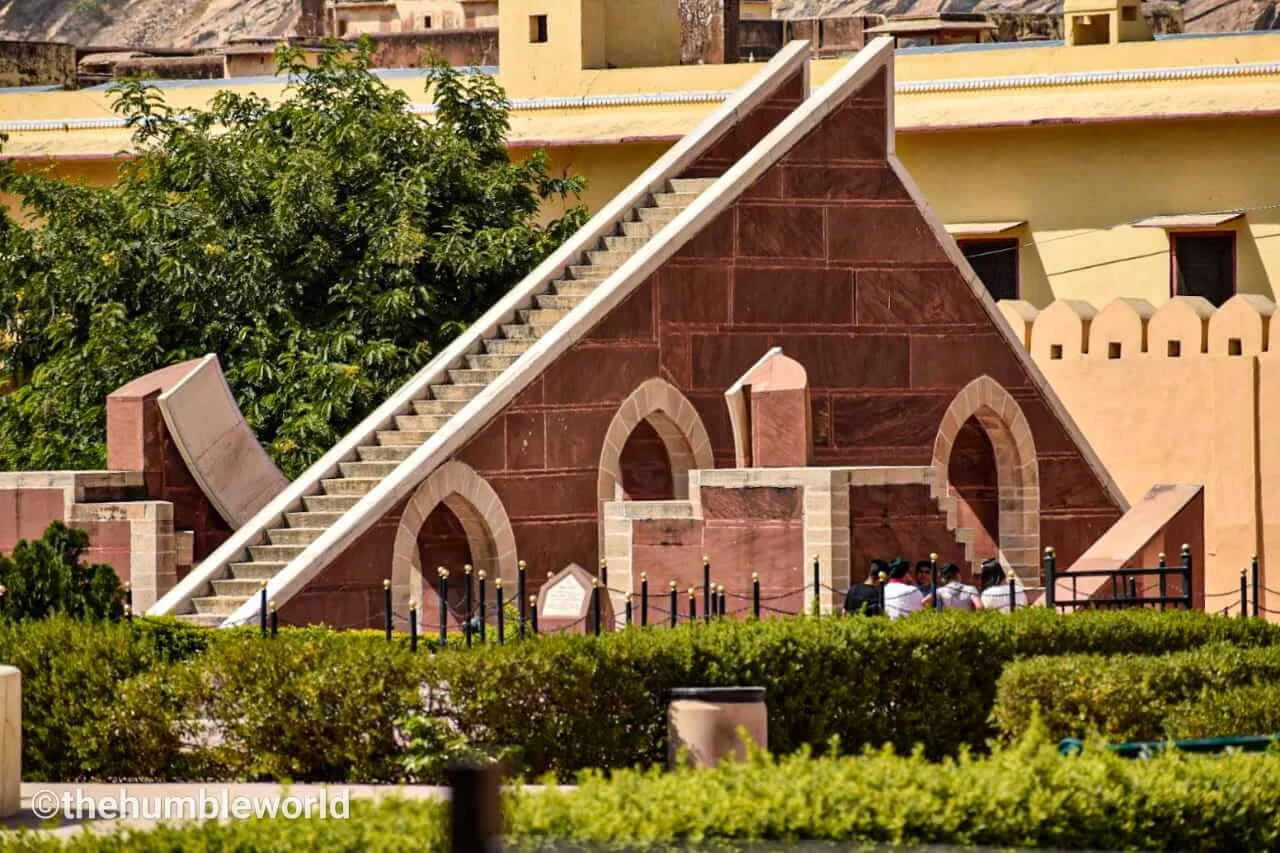 |
| Small or Laghu Samrat Yantra |
3. Ram Yantra:
This yantra is used for the measurement of azimuth (the coordinate system in which a celestial object's position is described) and elevation of the sun and other planets. There is a tube-shaped structure, opening in the direction of the sky. Each tube has a pole defined at its center. The poles are of equal heights. There are scales available in the inside wall of the yantra, indicating the angle of altitude and azimuth of the celestial bodies.
Ram Yantra is available only in Jaipur and Delhi Jantar Mantar.
 |
| Ram Yantra, Jantar Mantra |
4. Jaya Prakash Yantra
Jaya Prakash yantra has two hemispherical-shaped sundials that look like bowls, graded with marble slabs. When the inverted image of the sky falls on the slabs, the movement of this inverted shadow helps to determine the elevation, exact position, azimuth, and hour angle of heavenly bodies.
5. Chakra Yantra:
This instrument is a ring, which is used by astronomers to calculate the coordinates of the sun and the hour angle. There are four semi-circular arches, meant for the shadow to fall. Because of this process, the declination of the sun reduces by four times a day.
 |
| Chakra Yantra, Jantar Mantar |
6. Rasivalya(Zodiacle Circle):
This instrument is to determine the latitude and longitude of the celestial bodies. There is a total of twelve instruments that represent the zodiac signs, every instrument is measured when the corresponding sign of the zodiac transits the meridian.
 |
| Rasivalya(Zodiacle Circle), Jantar Mantar |
7. Nadivalaya:
This instrument is used to measure the time to an accuracy of less than a minute. This instrument consists of two circular plates, facing in the north and south direction which are its dials. The wall of the circular plates is inclined towards the south direction at such an angle that the instrument remains parallel to the plane of the Earth equator.
The needles placed at the center are parallel to the axis of rotation of the earth its shadow is projected on the graduated dials makes it possible to know the minutes and the hour.
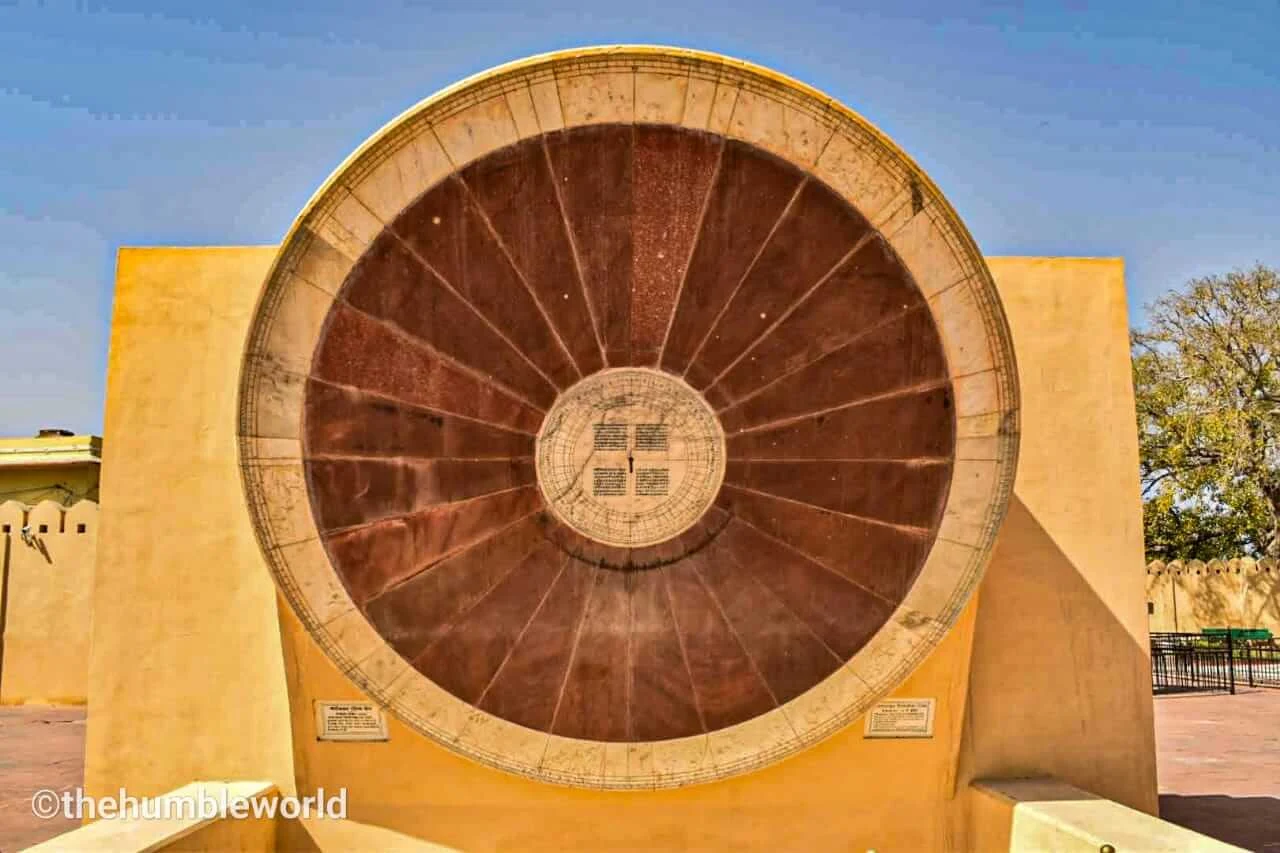 |
| Nadivalaya Yantra, Jantar Mantar |
8. Kranti Vritya:
This is a special instrument used to measure the solar sign during day time. There are many small structures, equidistant from each other on the plane surface. You can't miss this instrument on your visit to Jantar Mantar.
 |
| Kranti Vritya Yantra, Jantar Mantar |
Important Tips For Visiting Jantar Mantar:
1. Try planning your visit in winters or early monsoon season because summer would be very hectic with irresistible heat.
2. Carry a water bottle with you for the safer side.
3. Try to wear comfortable clothes and footwear because you may have to walk for a long.
4. If you keen on learning and knowing the historical instrument's working, definitely take a guide.
5. You are allowed to take the photographs.
Thanks for reading :)














1 Comments
Jantar Mantar Jaipur holds immense cultural significance, serving as a bridge between diverse civilizations and cosmological beliefs. It stands as a testament to the scientific and cosmological knowledge of India and the various civilizations that influenced its design and construction.
ReplyDelete